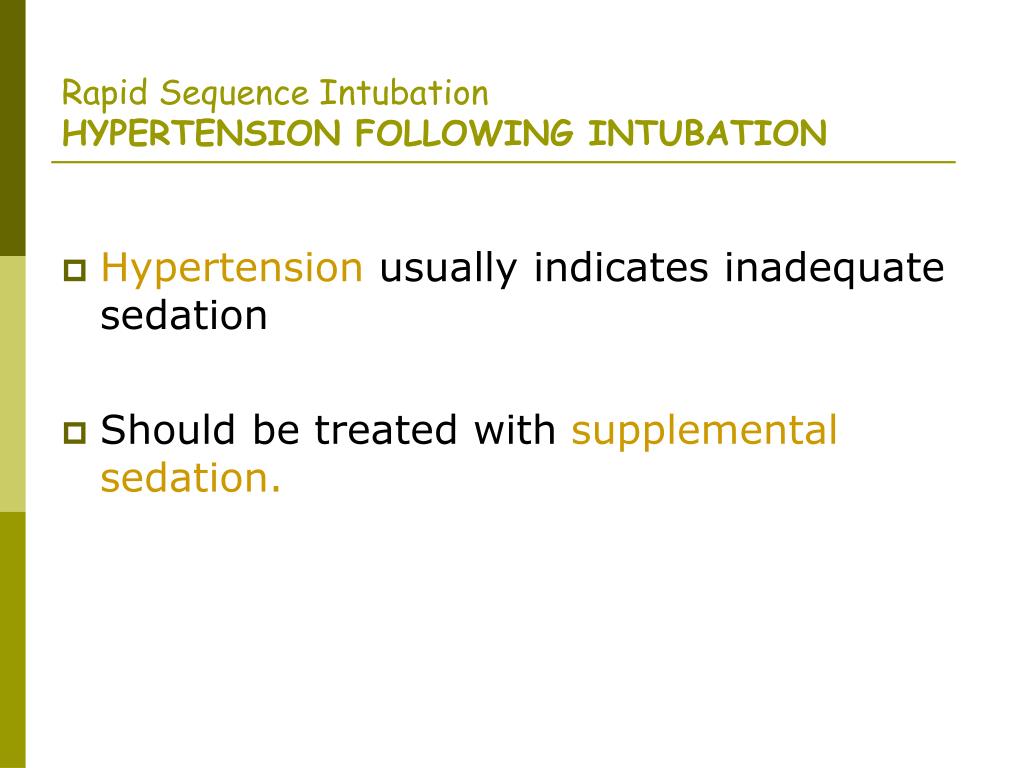
Upper airway obstruction or injury (e.g., burns or caustic inhalation) requiring early and rapid stabilization of airway.Hypercapnic respiratory failure causing respiratory acidosis and increased work of breathing indicative of impending respiratory failure.Hypoxemic respiratory failure, especially when it is persistent despite 100% inspired oxygen or non-invasive positive pressure ventilator support.Usually, emergent endotracheal intubation is indicated in the following clinical scenarios : This article gives an overview of indications, mechanism of action of commonly used sedatives and paralytics, endotracheal tubes, the sequence of steps in rapid sequence intubation, adverse effects of intubations and medications, and important contraindications. Rapid sequence intubation involves the simultaneous rapid administration of a paralytic drug and an induction agent to create optimal conditions to provide rapid control of the airway with the placement of an endotracheal tube. In a rapidly deteriorating, critically ill patient, success rests on adequate preparation, experience, and anticipated difficulty associated with airway, clinical condition, and intubation. Mastering the skill of endotracheal intubation to secure an airway plays a critical role in many settings such as pre-hospital environments, emergency rooms, critical care units, and peri-operative medicine. Explain the importance of collaboration and communication among interprofessional team members to improve outcomes and treatment efficacy for patients receiving medications to facilitate intubation.

Review the administration of the various intubation medications.Outline the criteria for using medications to assist in the intubation process.Summarize the mechanisms of action of the various intubating agents.This activity describes the mode of action of various agents used in the intubation process, including mechanisms of action, pharmacology, adverse event profiles, eligible patient populations, monitoring, and highlights the role of the interprofessional team in the management of conditions where medications to facilitate emergent intubation offers an advantage. Rapid sequence intubation involves the simultaneous rapid administration of a person with paralysis and an induction agent to create optimal conditions to provide rapid control of the airway with the placement of an endotracheal tube. This paper explores some of the issues surrounding whether it is feasible for paramedics to routinely perform RSI in the future.Mastering the skill of endotracheal intubation to secure an airway plays a critical role in many settings such as pre-hospital environments, emergency rooms, critical care units, and peri-operative medicine. Rapid sequence intubation differs from the normal method of endotracheal intubation in that it can be performed on originally conscious and/or semi-conscious patients and that it uses sedation and paralytic pharmacological agents coupled with protective airway manoeuvres to induce a state of sedation suitable to facilitate endotracheal intubation. However, rapid sequence intubation induction, as an advanced paramedical procedure, is not currently advocated for UK paramedic practice. Endotracheal intubation is currently routinely performed on cardiac arrest patients and traumatic injury patients by paramedics. Pre-hospital endotracheal intubation is indicated in patients when there is-or a risk of-apnoea, upper airway blockage and a need for safeguarding against aspiration due to a decreased Glasgow Coma Scale. Without a patent airway, asphyxia will lead to death rapidly if not corrected.

It is usually the most obtund and critically ill of patients that receive paramedic pre-hospital endotracheal intubation.


Rapid sequence induction and the paramedic


 0 kommentar(er)
0 kommentar(er)
